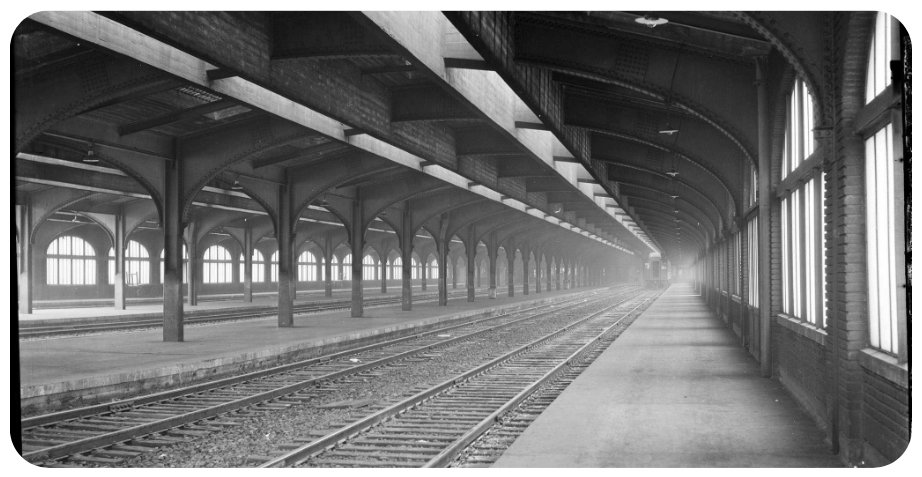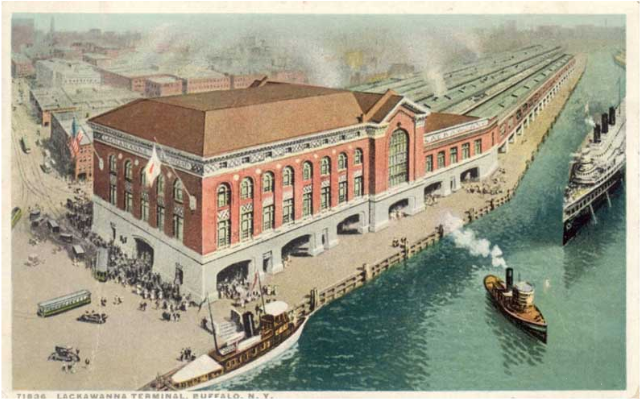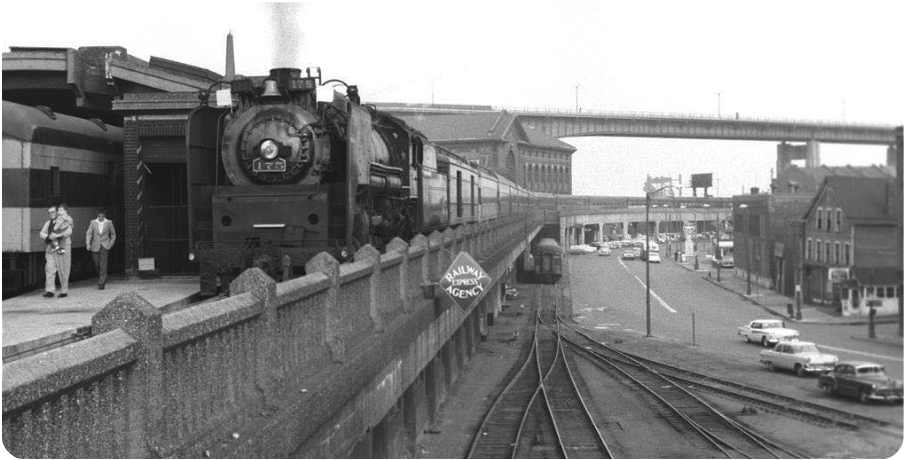Outreach.
The first step to any project of this size begins by sparking conversations with the community.
Our vision begins by reintroducing the public to the terminal through implementing best practices of placemaking - a multi-faceted approach to planning and design that capitalizes on community assets, inspiration, and potential, to create quality public spaces that promote health, happiness, and wellbeing.
Inspiration.
In addition to outreach, sites that have been successful in implementing similar projects and ideas were complied.
Cherry Street Pier | Philadelphia, PA
Adaptive reuse of a former municipal pier. Very diverse mix of uses and highly adaptable and modifiable space. Artist studio spaces, market space, event space, food and beverage vendors, and communal gathering/lounging spaces.
Mercato Metropolitano | London, UK
Adaptive reuse of an abandoned paper factory. Diverse mix of uses, market stalls, community table for eating and drinking, startup incubator for food businesses, and cooking classes. A “sustainable community market".
Cobblestone Live | Buffalo, NY
Small/medium-scale music event, with multiple stages. Enlivens, activates and highlights the cobblestone neighborhood
Vision.
These initial renderings give a general idea of the activation and ideas that will be implemented at the DL&W Terminal.
The vision that has come from the initial public outreach includes: activation of the outdoor spaces including landscaping and greenery; flexible event spaces; bike repair and rental facilities; market stalls; food and beverage options; shared work space for arts and exhibitions; indoor and outdoor communal spaces; game and sports spaces; and welcome center.
Once the terminal is reactivated, focus will shift to creating an estuary for commerce and culture - expanding public amenities, programming, and cultural offerings, growing community partnerships, and fostering equitable economic opportunities.
History.
The Delaware, Lackawanna & Western (DL&W) Terminal, built in 1917 during Buffalo’s industrial peak, was a vital hub for passenger and freight rail services. Its grand Beaux-Arts architecture and advanced infrastructure symbolize Buffalo’s prominence during the Golden Age of Rail Travel. Shared with the “Nickel Plate Road” (New York, Chicago, and St. Louis Railroad), the terminal connected Buffalo to leading cosmopolitan cities. Strategically positioned at the waterfront and eastern terminus of the Great Lakes, the terminal provided an advantageous site for east/west and north/south commerce, shaping the city’s layout around railroads.
As rail travel declined mid-century, the terminal's bustling activity diminished, leaving it largely underutilized for decades. Today, it stands as a historic landmark with immense potential for reinvention, poised to reconnect Buffalo to its waterfront and celebrate the city’s industrial heritage.
The terminal served as union passenger station for several railroad companies, cementing Buffalo’s role as a critical transportation pivot in New York state:
New York, Chicago and St. Louis Railroad (Nickel Plate Road)
Buffalo, Rochester & Pittsburgh Railway (Acquired by Baltimore & Ohio in 1932)
Pere Marquette Railway (only until 1932)
Wabash Railroad
Norfolk & Western extensions:
City of Chicago (westbound, picking up carriages from Phoebe Snow for Hoboken-Buffalo-Chicago service)
City of Cleveland (eastbound, connecting with the New York Mail for Chicago-Buffalo-Hoboken service)
The Terminal’s Timeline
A summary of some key milestones in the history of the DL&W Terminal in Buffalo
Phoebe Snow (Flagship Train)
The Twilight
The Westerner
The Owl
The Pocono Express
The New Yorker
New York Mail
Merchants Express
The Trains.
At its peak, the terminal handled all of the DL&W’s notable intercity trains:
Technology.
BUSH TRAIN SHED
Built in 1915 as part of the DL&W Terminal, the Bush Train Shed stands as one of the oldest surviving examples of reinforced concrete railroad technology. Designed by DL&W's Chief Engineer Lincoln Bush, its innovative arched roof with glass panels provided natural light while protecting passengers and trains. Hailed as an engineering marvel of its era, the structure embodies Buffalo’s legacy as an industrial pioneer.
ROAD OF ANTHRACITE
The introduction of anthracite—the highest grade of coal—revolutionized railroad passenger services thanks to its cleaner burn, improving the safety, health, and efficiency of train travel. Subsequent electrification of suburban commuter routes further advanced speed, comfort, and reliability, solidifying the DL&W's leadership during the Golden Age of Rail Travel.
Today, Buffalo’s steel and coal production facilities are relics of the past. Former industrial sites, like the Bethlehem Steel plant, are being repurposed for renewable energy projects, including a wind farm, showcasing Buffalo’s adaptability and forward-thinking spirit.
Innovation.
CITY OF LIGHT
In 1905, Buffalo became one of the first cities in the world to be powered by long-distance transmission of hydroelectricity from the Niagara Falls. The innovation was debuted during the the 1901 Pan-American exposition, heralding Buffalo as a gateway to the new, modern 20th century to come. This form of electricity was more affordable, attracting different industries (such as steel and
aluminum manufacturing), which sparked Buffalo's industrial growth.
Today, Buffalo has emerged as a hub for technological innovation, with several initiatives contributing to its growth—such as Empire AI, TechBuffalo, or 43North—accelerating Buffalo's commitment to facilitate a vibrant ecosystem that fosters innovation, startups, and grassroots efforts.
Location.
The DL&W Terminal is a historic transportation hub located along the Buffalo River in downtown Buffalo, strategically positioned at the intersection of the city’s waterfront and its industrial heritage.
The Neighborhood.
Cobblestone District
Historic Buildings
Interpretive Panels
Artisans and Craft
Markets, Events, Concerts
Buffalo Waterfront
Seasonal Sports
Wellness Trails
Bike & Hiking Trails
Outdoor Sports
Community Grassroots
Canalside
Bike Rentals
Boat Tours
Public Art
Boardwalk
Ice Cream
Food & Beer Garden
Kayak/water Sport Rental
Ice Rink (Winter)
Buffalo Heritage Carousel
Connecting Communities.
Taking advantage of all the benefits of this location will be important to its ultimate success, including creating:
A seamless connection between Canalside and the DL&W Terminal and new light rail station
Upgrading the Canalside/Riverline Trail entrance in the southwest corner. Currently just one set of stairs.
Integrating a new entrance to the second level from Canalside along the Shoreline Trail
A Vital Transit Hub.
The DL&W Terminal is a historic transportation hub located along the Buffalo River in downtown Buffalo, strategically positioned at the crossroads of the city’s waterfront and its rich industrial heritage. It serves as a vital link to the Metro line connecting to UB South Campus, with potential future extensions reaching further
north to UB North Campus.
Additionally, the terminal is a key connection point for several other transportation and recreational links, including the Empire Trail, which intersects with the Shoreline Trail near DL&W, the proposed Riverline elevated trail that will repurpose the former DL&W elevated track, and a probable seasonal water taxi stop providing access to Buffalo’s Outer Harbor and its vibrant recreational spaces.










































